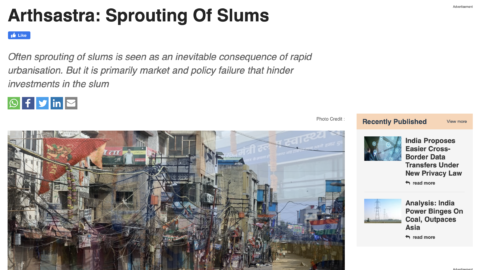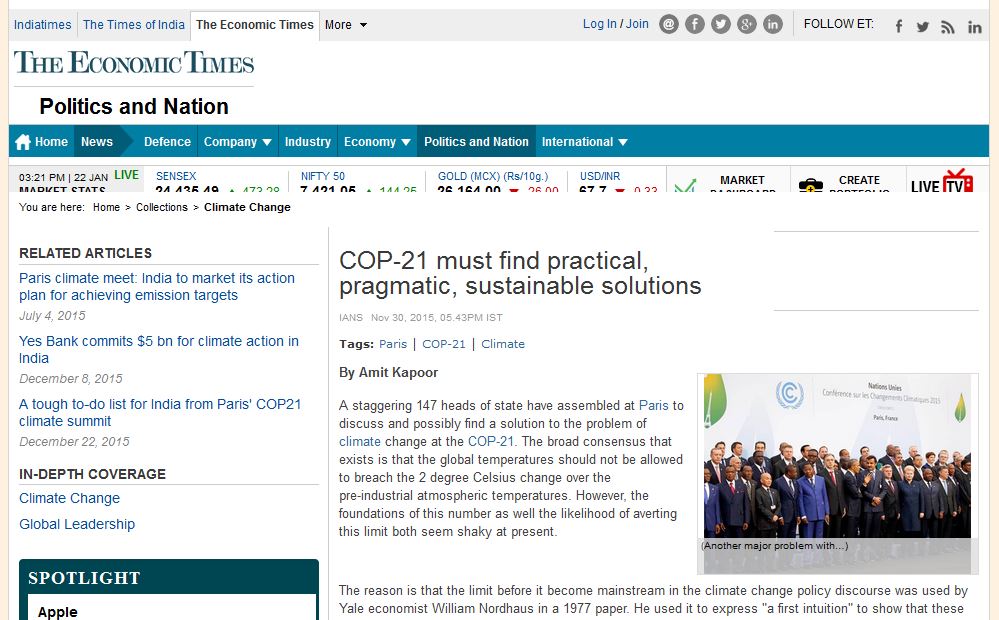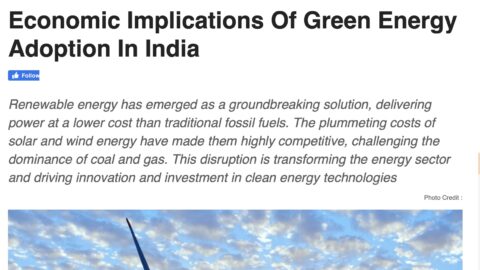“Change is the only constant’ is one of the phrases perceived as a cliché in today’s times. The fact that it was articulated by a Greek philosopher, Heraclitus, over 2000 years ago , and still finds itself commonly quoted, shows that these words hold a powerful truth about the inevitability of change. There are dynamic forces that alter contours of the world and mould trajectories of people, societies, nations and the world at large. Humans have forever been consumed with predicting what the future holds. The COVID-19 pandemic is one among other unprecedented events that has shown us our limited ability to always know what’s around the corner. However, despite there being an element of unpredictability, developing an understanding of the key overarching trends shaping contemporary times holds a nation and its people in good stead. Change was particularly accelerated in the last two decades driven by globalisation and technological revolution. In this day and age, where success or failures are not necessarily limited by national boundaries, global events can manifest as tailwinds presenting opportunities or headwinds posing challenges. Policies must factor these in to navigate towards higher levels of growth.
It is unquestionable that the global macroeconomic terrain has undergone dramatic shifts. As per World Bank estimates, trade as a share of GDP at a world level, has increased from about 25 percent in 1970 to 52 percent in 2020. In addition to the strengthening of interdependence and interlinkages across regions, the rise of Asia and emerging economies is a notable trend. According to the IMF, emerging markets will grow by more than twice the speed of developed markets in 2023. Between 2020 and 2025, Asia is poised to contribute $22 trillion in new wealth. The global economy has also seen an expansion in the spread of Global Value Chains (GVCs). From the time of the opening of Suez Canal, the invention of the shipping container to the rise of Asia as a manufacturing hub – supply chains have undergone dramatic evolution. Today, around 50% of global trade involves GVCs. In this context, India must identify the right opportunities in this landscape. One way is to embark on a strategic integration in the GVCs. Ensuring gainful participation of local firms in GVCs by enhancing their capacity will further boost production through transfer of knowledge, investments, and global best practices. In 2020-21, the combined share of Gujarat, Tamil Nadu and Maharashtra constituted around 60 percent of the country’s total exports. There is immense potential for India to boost exports by activating dormant capacities at the sub-national level.
Yet another undeniable phenomenon that has affected not just the global economy but all of society, and will continue to do so, is climate change. It has become imperative for countries to make climate change an integral component of policy discussions. The decade spanning 2011-2020 has been the warmest on record, as the world grapples with potential extreme weather events, food scarcity, and the resultant poverty and displacement. While there is no simplistic solution to this issue, one of the opportunities that India can leverage is investment in climate resilient infrastructure. The fact that three-quarters of the physical infrastructure of India in 2050 is yet to be built gives us an opportunity to construct strategically with an eye on the future. According to a World Bank report, the average net benefit of investing in more resilient infrastructure in low- and middle-income countries would be $4.2 trillion, generating $4 in benefit for each $1 invested. The government has set an ambitious target of 500 GW renewable capacity by 2030 for which a range of measures are underway including the adoption of electric vehicles, production of green hydrogen, among others. Shifting to renewables and building climate-consciously is an opportunity to cut our carbon footprint, meet net-zero targets, and decouple emissions and economic growth.
Apart from a changing global macroeconomy and the impact of climate change, Digitalisation has been a potent trend with a pronounced effect on all walks of life. It has gained greater momentum in the post COVID-19 era. While there is a long way to go in upgrading our quality of technological infrastructure, the country has attained remarkable levels of digitalisation in a brief period of time. Unified Payment Interface (UPI) is a leading digital payment platform in India which has onboarded 376 banks and facilitated 730 crore transactions (by volume) worth Rs 11.9 lakh crore. The Aadhaar initiative has seen over 135.5 crore residents enrolled. There is an opportunity to both continually improve our digital initiatives and become a guiding force for developing nations looking to enhance digitally.
In a universe of moving parts and unpredictable trends, how does a nation strategise for growth? In the aftermath of the pandemic, the idea of resilience has gained ground, and rightfully so. Going beyond resilience, countries must perceive change as a valuable input that spurs innovation. During the pandemic, the contact tracing app Aarogya Setu reflected India’s ability to build ingenious systems in crisis response. Despite the adverse effects of COVID-19, countries harnessed technology to provide digital solutions – from chatbots in Singapore to telehealth expansion in Indonesia. Going ahead, India is faced with pressing concerns plaguing the world including rising debt levels, inflation, food and energy crisis, and geopolitical tensions. It is understood that addressing challenges in an evolving external context requires strategic action in different socio-economic domains, but most importantly, it calls for a shift in mindset that normalises the imminence of change.
The article was published with Business World on March 15, 2023.
























